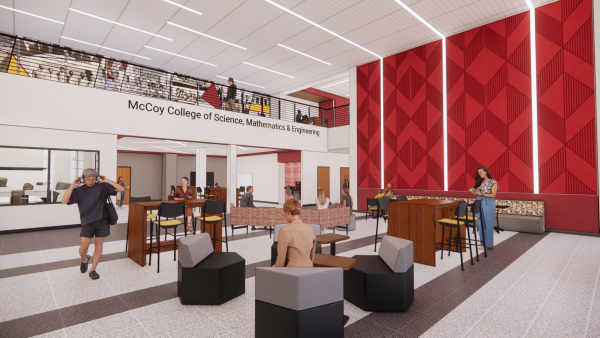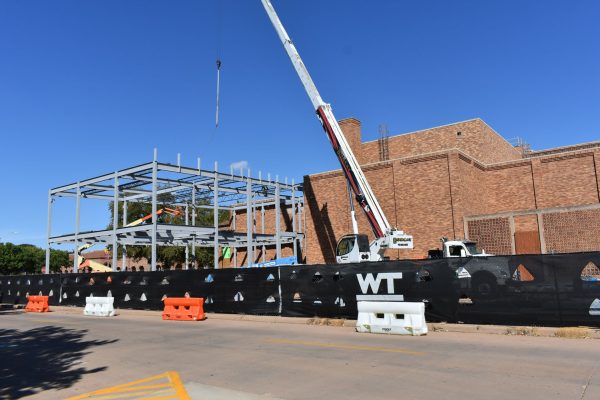Students are not the only ones being tested this fall. Students may have noticed construction workers on campus working hard to meet their December deadline for phase one of the renovations at Bolin Science Hall.
The $43 million renovation includes a two-story expansion to the northwest side of the building, which will contain five new classrooms. Although smaller than other classrooms in the building, each new classroom should hold around 40-60 students.
Another aspect of phase one is a walkway connecting each half of the building which will overlook the new collaboration area, a space that was previously used as lecture halls.
According to associate vice president of facilities services Kyle Owen nearly half of the funds for the project are being used to update the structural integrity of the nearly 60-year-old building.
“All of the perimeter walls will have sheetrock added to them because they currently don’t meet energy code.” Owen said, adding, “Temperature control and indoor quality should be a lot better than what it was.”
These improvements will ensure Bolin meets modern indoor air quality standards.

Additionally, a new air duct system is being installed throughout the entire building, along with updates to the plumbing and electrical system.
“These are infrastructure improvements that are not things that most people notice, but they will all make the building much safer and more comfortable,” Owen said.
Once phase one is complete, construction will move to the eastern half of the building, and classes will shift over to the western half, allowing more convenient entrances to be utilized by students coming from classes in other buildings.
“There should be a north, south, and west entrance when we finish this phase, and only the east side will be blocked off,” Owen said.
However, he added that most of the parking lot will remain fenced off, deeming it a necessary space for construction materials.
This is the first major renovation at Midwestern State University that is being managed by the Texas Tech University System (TTUS), allowing Owen to focus more on smaller facets of the project.
“In past projects like this, I would’ve organized everything to find budgets and organized meetings,” Owen said, continuing “The Texas Tech System does that for us, and for me, that has worked very well.”

Whiting-Turner, the general contractor for the project, is based in Fort Worth, but local companies, such as James Lane Air Conditioning, have been subcontracted to provide much of the mechanical and electrical work. Whiting-Turner has the labor and resources available to help subcontractors if they happen to fall behind.
Owen is confident that the Whiting-Turner will have no trouble sticking to schedule.
“The next couple of months will be very telling, and there’s going to be a lot more progress from the outside,” Owen said.
Students and faculty should begin to see the steel structure of the expansion going up within the next week, followed by walls made from the iconic brick used across campus.
Construction may damper students with classes in Bolin and the faculty teaching those classes, some of which have been displaced since the renovation began in February.
Dr. Robert Brennan, who recently became the new Dean of McCoy College of Science, is adamant that while the challenges students are facing are bothersome, the noisy construction taking place during classes is necessary to keep the project on schedule.
“The faculty has done an amazing job adapting and still engaging the students, even in a time of displacement and disruption. But once the construction model is complete, then they’ll have state-of-the-art facilities going forward,” Brennan said.
Brennan also emphasized the importance of the project in terms of the continued growth of Midwestern State University’s new student enrollment.
“That first five minutes determines if they’re going to write you off or at least keep you on the list. We need something that’s going to keep us on their list so that then we can tell them why we have such a great place to come for their education,” Brennan said, continuing, “Because if you’re taking them around and you’ve got dreary, outdated, dark, dilapidated spaces, it’s not going to matter what story you have to tell.”
Phase two is set to begin in mid-January. The project is on track to be finished by fall 2025.






















